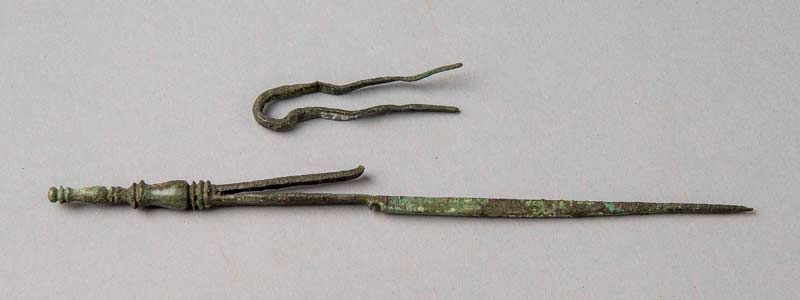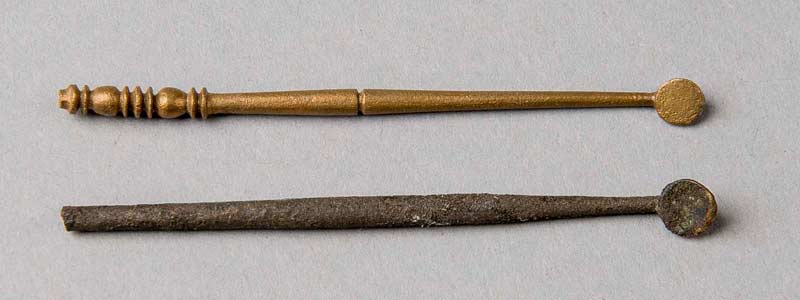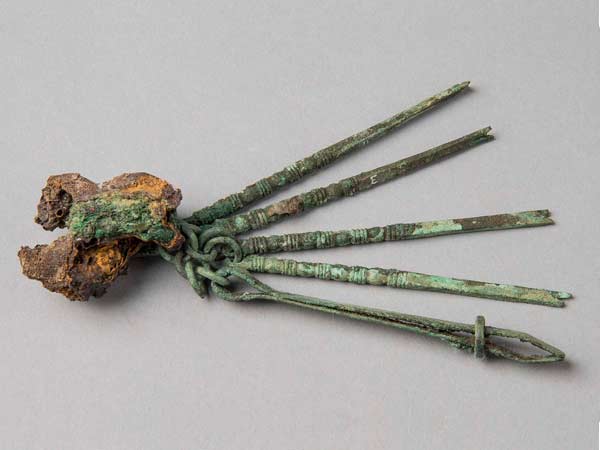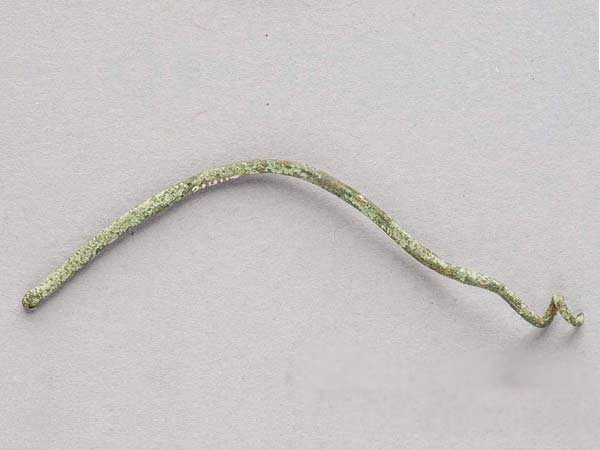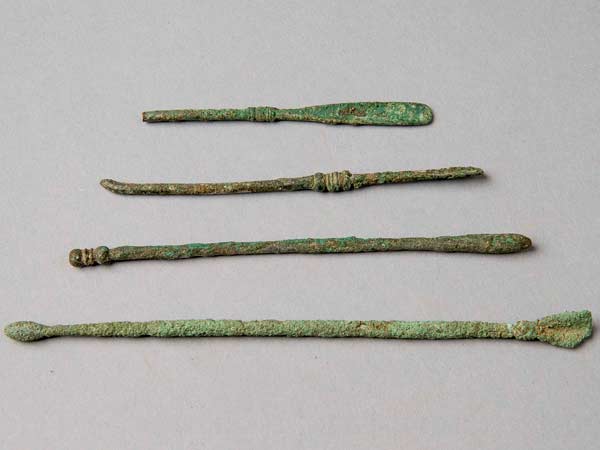Archaeological remains of medical instruments provide us with extraordinary evidence for actual medical practices in the Graeco-Roman world, illustrating the information given by ancient authors such as Aulus Cornelius Celsus (fl. AD 25) and Paul of Aegina (ca. AD 625–690). Forceps, bifurcated hooks, ear probes, spoon probes, and scalpels might suggest a number of uses, both cosmetic and medical. But it is only when we read Celsus vividly describing how to use a probe to assess the damage of a fistula, or Paul of Aegina recommending the use of tweezers to extract a hair from the eye affected by conjunctivitis, that we fully understand the varied contexts in which these tools were used.


